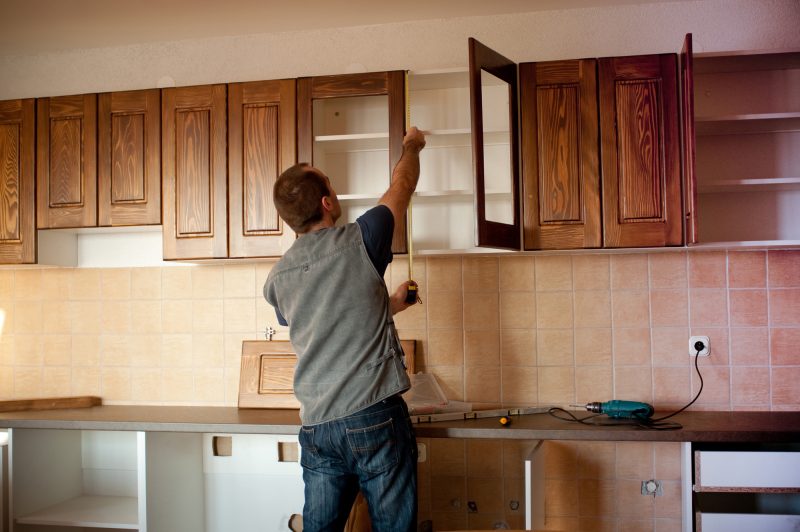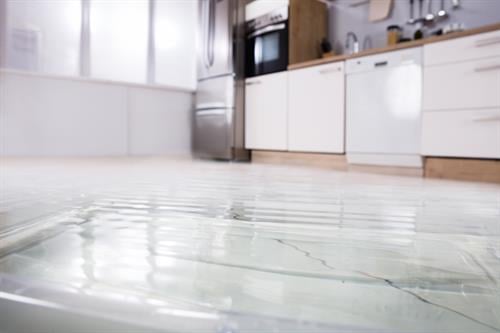Preventing Water Damage in the Kitchen
Preventing Water Damage in the Kitchen
Blog Article
This great article following next on the subject of Causes of Water Damage in Kitchen is amazingly entertaining. You should see for yourself.

The kitchen is the area where a great deal of water activity takes place. You can barely do anything without using water in the kitchen, from cooking, cleansing, as well as doing the dishes.
Therefore, checking your cooking area every so often is a necessity. This is due to the fact that it has a higher opportunity of getting water damage as a result of the appliances you make use of there.
When faulty, these home appliances that control water might make your kitchen untidy and also impact the structure of your structure over time.
So, allow's have a look at some root causes of the water damage in the kitchen as well as what you need to watch out for.
Some Sources Of Water Damages in the Kitchen area
These are a couple of reasons for water damage in the kitchen area.
Faulty Drainpipe Pipeline
Drain pipes Pipelines are necessary parts of our homes, specifically in our restrooms and also kitchens. Nevertheless, they obtain damaged by getting blocked, split, and also burst. Or even worse, they can be wrongly or loosely linked; whichever the instance might be, it can be a severe issue.
Malfunctioning drainpipe pipelines can cause water damage and, consequently, trigger mold and mildew development and disfigure the look of your wall. It can likewise make the damaged location look messy.
Therefore, it is recommended always to inspect to make sure that all the pipelines remain in good condition and also obtain a sound plumbing system to maintain and repair any type of problems.
Faulty Cooking Area Sink
The cooking area sink is an essential and also the majority of made use of part of the cooking area. It is prone to water damage; damages such as blocked pipelines, leaky pipes, as well as malfunctioning taps.
These problems can be annoying, especially when one is hectic in the kitchen area. Nonetheless, it does not just occur without offering a clue or a sign. So below are some indicators to know when your sink is not okay
These are the major damages that can take place to your kitchen area sink. One means to quit this damage is by making certain that food bits do not get right into the pipes. You are additionally inspecting the pipes and also faucets as well as ensuring that it is effectively repaired and also in good condition.
Leaking Dishwasher
Dishwashing machines make life in the kitchen much easier. It is an optional kitchen device and, when readily available, can be a source of water damage. Furthermore, like other makers, it will establish mistakes in time, despite having maintenance.
Among the faults is leaking via the door or below the dish washer. These faults establish as a result of age, fractures, incorrect usage, loose web links to pipes, and so on.
Faults because of age originated from constant use. As a result, the door leaks as a result of shutting and opening up.
Additionally, faults from the incorrect use may trigger water damage by presenting cracks to it. It is recommended to comply with the hand-operated guide of the dishwasher to avoid this certain damages.
The leaks under the dishwasher can come from fractures in the gasket, tube, and wrong or loosened link to pipes or drains.
This sort of leak frequently goes unnoticed as well as can be there for a long period of time. Due to the time frame, it might damage the floor as well as trigger mold and mildew development.
More so, the longer the water remains, you will notice the warping of the floor where the dishwashing machine is. This is a great indication to watch out for when examining if your dishwashing machine leakages. Identifying as well as repairing this in a timely manner stops severe water damage to your floor covering.
Profits
Watching out for damages in your kitchen can be tasking but necessary. It makes your job there less complicated and also much safer.
The causes noted above are only a few variables to take into consideration, particularly if your kitchen area has a lot of devices.
So obtain an expert plumbing service ahead around and look for any type of damage and also get them fixed.
It makes your kitchen area damp as well as messy, especially when dripping from the pipelines. And if it is trickling from the tap, it leads to water wastage.
It is an optional cooking area home appliance and, when readily available, can be a resource of water damage. Much more so, the longer the water remains, you will notice the bending of the floor where the dishwasher is. Identifying and repairing this on time avoids serious water damage to your floor covering.
WAYS TO PROTECT YOUR KITCHEN FROM WATER DAMAGE
The kitchen is one of the most significant rooms in your house, as it is a multipurpose room wherein you can do your cooking and cleaning. Nowadays, homeowners tend to ignore the problems under their sink or appliances because of their busy schedules. However, most household floods occur due to plumbing and appliance failure. One of the most common scenarios that cause water damage to your kitchen is when the dishwasher malfunctions and floods gallons of water.
Water damage in your kitchen can cause several problems, including cosmetic damage, mold growth, and even an unpleasant smell. Often, if you fail to neglect the problem, there are always consequences. This article will help you protect your kitchen from water damage.
Common Causes of Water damage in your kitchen
Pipe problems are the most common source of water leaks under your sink. If homeowners ignore this issue, it will burst and flood the kitchen. Dishwasher leaks can be a source of water damage in your kitchen. An old, broken, and defective dishwasher can cause leaks, damage to your floor, and even mold growth. Refrigerator leaks can cause water damage in your kitchen, as sometimes melted ice from defrosting can cause leaks. Furthermore, if your refrigerator has internal problems, it is very likely to cause water damage. Back-splash and sink caulking can cause discoloration and water damage to your countertop tiles. Ways to Protect Your Kitchen From Water Damage
Regular maintenance
The most important thing you can do to protect your kitchen from water damage is to inspect the sinks, drains, and pipes, as well as the kitchen appliances, regularly. As with the sink, check for missing or deteriorated caulk. Remove the old caulk and clean the area thoroughly and re-seal it with fresh silicone. Furthermore, sweep the drain regularly, empty the filter and dispose of the debris in the garbage, and inspect the supply lines and valve for cracks.
Check your appliances
Check the user’s manual for instruction and proper use of every water-related appliance installed in your kitchen. For the dishwasher, check this procedure to prevent the dishwasher from flooding your kitchen. Check the appliances that need water, such as the coffee maker, ice maker, and water cooler, as they can become the cause of water damage in your kitchen. You may call a professional to check and repair damaged appliances and professional restoration for water damage clean-up.
Garbage clean-up
Fats, oil, and grease are common in the kitchen. Pouring them down the drain can cause clogs and sewage backup, which may result in significant kitchen water damage. If your kitchen sink is clogged, use a solution of hot water, baking soda, and vinegar to unclog the fats and oils in the pipes. Also, make sure to throw out the debris in the trash and clean the sink properly using paper towels for greases and oil and soap or bleach solution for the sink itself.
Shut off your water line
Make sure to shut off your main water line, especially if you're away and having some flood issue. As mentioned, dishwasher leaks are one of the most common culprits of water damage in the kitchen. So, make sure to only use the dishwasher if someone is at home and available to attend in case a problem arises.
Furthermore, it is also important that every member of your household knows where the shut-off valves are located. So in case of an emergency, they can mitigate the damage by turning off the water source.
Install leak detectors
One of the best ways to catch water damage before it could even cause serious damage to your home or business is by installing a water or leak detector. A leak detector monitors the flow of water through a pipeline, can detect moisture in the air for molds, and tracks the water temperature. Also, it can shut off your water line in case of an emergency. Install leak detectors under the kitchen sink, near the dishwasher and refrigerator.
https://superiorrestore.com/7-ways-to-protect-your-kitchen-from-water-damage/

We had been guided to that write-up about Causes of Water Damage in Kitchen through someone on another domain. Appreciated our write-up? Please share it. Let someone else check it out. We truly appreciate reading our article about How To Prevent Water Damage To Your Kitchen.
Set Up An Appointment Report this page